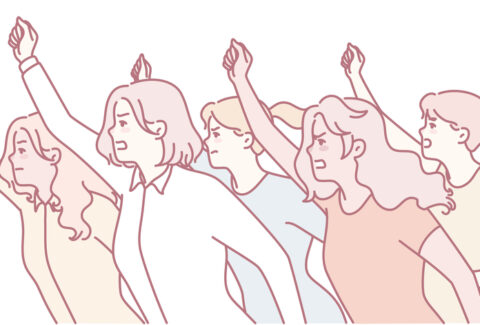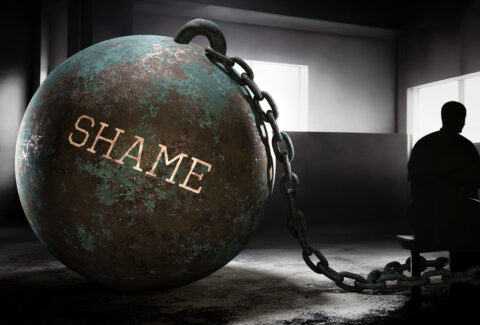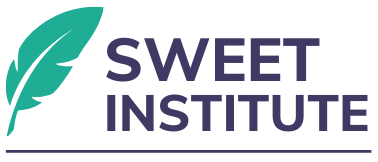From Shame to Strength: Breaking Free from the Cycle of Internalized Oppression

From Shame to Strength: Breaking Free from the Cycle of Internalized Oppression
Introduction: The Silent Weight of Shame
Shame is one of the most corrosive forces that internalized oppression plants within us. Unlike guilt, which is about something we did, shame is about who we believe we are—broken, unworthy, or “less than.” For marginalized communities, systemic oppression often seeps inward, transforming external prejudice into internalized shame. This shame does not just wound; it immobilizes, distorts identity, and perpetuates cycles of silence and self-limitation.
The journey from shame to strength is not only possible; rather, it is essential for reclaiming freedom, agency, and dignity.
The Cycle of Internalized Oppression
Research shows that experiences of systemic oppression—racism, sexism, ableism, classism—can alter self-perception in profound ways. This phenomenon is called internalized oppression, a process in which the targets of discrimination unconsciously adopt the negative messages directed at them. Over time, these messages evolve into self-talk and inner narratives that echo the voice of the oppressor (David, 2014).
For example:
- Racism → “I must work twice as hard because I am not as good.”
- Sexism → “My voice isn’t as valuable in this meeting.”
- Classism → “People like me don’t deserve better.”
The cycle begins externally, becomes internalized, and then reproduces itself across generations unless interrupted.
Shame as the Anchor
Shame operates like quicksand: the more one struggles against it, the deeper it pulls. Brene Brown (2006) describes shame as thriving in secrecy, silence, and judgment. For oppressed groups, shame becomes the anchor of oppression’s persistence. It prevents people from claiming their voice, advocating for justice, or even believing they are worthy of liberation.
Pathways to Transformation
Breaking free from shame requires courage, community, and intentional practice. Several evidence-based and lived-experience practices help individuals and communities move from shame to strength:
- Naming the Shame: The first step is recognizing that internalized narratives are not personal truths but implanted lies. Research on cognitive-behavioral models shows that naming distorted thoughts reduces their unconscious power (Beck, 2011).
- Practicing Self-Compassion: Kristin Neff’s (2011) research on self-compassion highlights its ability to counter shame. When individuals treat themselves with kindness rather than criticism, they begin dismantling the very root of internalized oppression.
- Reclaiming Community: Healing circles, collective storytelling, and group dialogue are vital. Paulo Freire (1970) emphasized that liberation is both personal and collective, for people are to learn to name their reality together and claim new narratives.
- Transforming Inner Dialogue: Neuroscience research shows that repeated reframing of self-talk rewires neural pathways (Siegel, 2012). By replacing “I am not enough” with “I was always enough,” individuals create new grooves of strength, dignity, and agency.
From Shame to Strength: A New Narrative
Imagine a young Black woman who grew up believing she had to suppress her intelligence to avoid making others uncomfortable. For years, shame shaped her silence. But through therapy, community circles, and self-reflection, she recognized this shame as not hers to carry. Reframing her inner dialogue, “My brilliance is a gift, not a threat,”transformed her shame into strength. Today, she leads initiatives that uplift other women of color.
This story illustrates the alchemy of liberation: when shame is recognized and released, strength emerges not in spite of oppression, but as a response to it.
Call to Action: Your Strength Awaits
Reflect on your own inner dialogue:
- What are the shame-based messages you’ve absorbed?
- Whose voice are they really?
- What would your life look like if you replaced shame with strength?
Transformation begins when you decide to stop carrying what was never yours to hold. By breaking free from the cycle of shame, you are not just healing yourself, rather, you are creating ripples of freedom for generations to come.
References
- Beck, J. S. (2011). Cognitive Behavior Therapy: Basics and Beyond. Guilford Press.
- Brown, B. (2006). Shame resilience theory: A grounded theory study on women and shame. Families in Society, 87(1), 43–52.
- David, E. J. R. (2014). Internalized Oppression: The Psychology of Marginalized Groups. Springer.
- Freire, P. (1970). Pedagogy of the Oppressed. Continuum.
- Neff, K. D. (2011). Self-Compassion: The Proven Power of Being Kind to Yourself. William Morrow.
- Siegel, D. J. (2012). The Developing Mind: How Relationships and the Brain Interact to Shape Who We Are. Guilford Press.
Download the scholarly version of this article by clicking HERE






